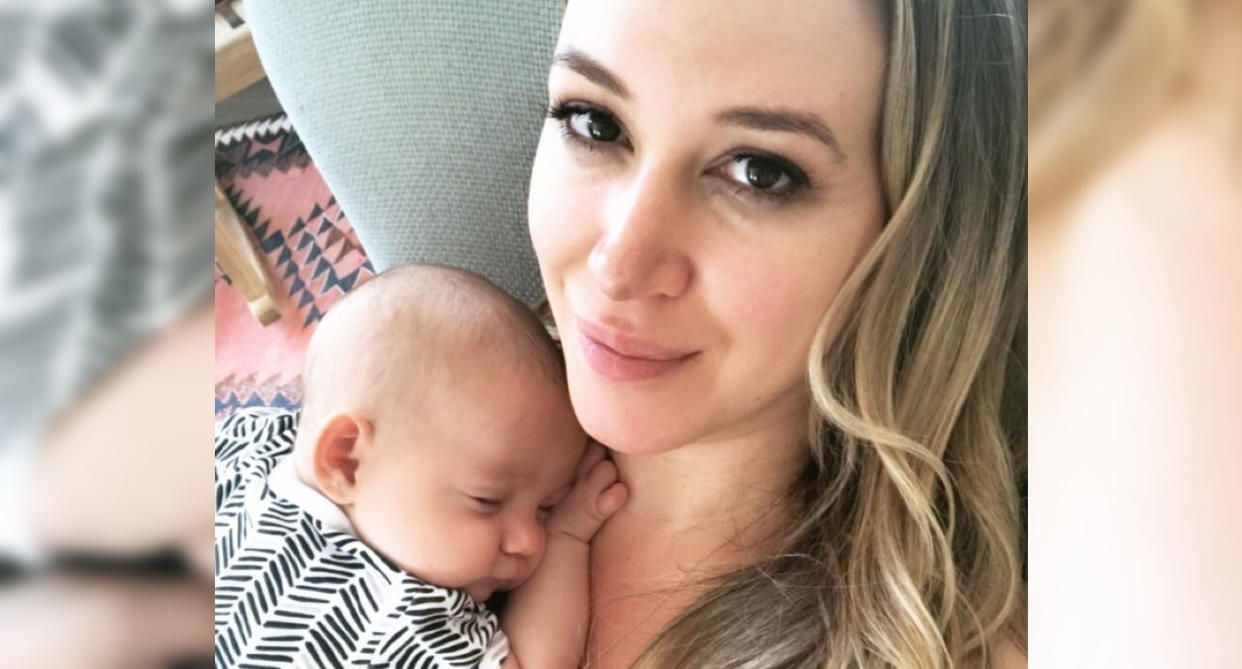Haylie Duff's newborn daughter has a 'witching hour' — what causes it?

Even celebrity moms aren’t spared from having fussy babies. Haylie Duff recently shared a photo of her pregnant sister, actress Hilary Duff, on Instagram holding Haylie’s newborn baby, Lulu. In the post, Haylie alludes to her baby’s “witching hour”: “My beautiful sissy & Lulu-liscious…unless it’s 6 pm… then she is Lulu-vicious.”
So what exactly is the witching hour? According to the Breastfeeding Center of Pittsburgh, it’s that fussy period babies experience around the same time of day — typically between 5 p.m. and 12 a.m. — when it’s especially hard to soothe your infant. The witching hour often starts when infants are between 2 to 3 weeks old. According to the center, the fussiness peaks around 6 weeks old.
A post shared by Haylie Duff (@haylieduff) on Aug 10, 2018 at 7:47pm PDT
“I have found that new parents usually refer to the ‘witching hour’ as a time when their infant has shorter naps and more frequent feedings,” Ambreen Syed, MD, of Stanford Children’s Health’s Peninsula Pediatric Medical Group, tells Yahoo Lifestyle. “Such feedings are often referred to as ‘cluster feedings.’ Not all infants will cluster feed and we tend to see it more in breastfed infants, but the theory behind cluster feeds and shorter naps stems from sleeping patterns in the womb.”
According to Syed, when a pregnant woman walks around during the day, it creates a gentle rocking motion in utero. This causes the baby to sleep more during the day when the mom is active and more likely be awake at night when the mother lies still in bed. “When the baby is born, the sleep schedule is thus a little reversed and the baby may have shorter naps during the night hours and feed more frequently at night,” she says. “The baby is also learning to recognize his or her hunger cues during this time and he or she is also adjusting to this new world where there is light, sound, and hunger. As the baby adjusts to all of these new stimuli, it can result in periods where the infant has shorter naps and cluster feeds.”
So how can parents make the witching hour a little easier? Feeding the baby more frequently during this fussy period can help.
“In addition to feeding the infant, anything that emulates the womb can help the infant through these periods, such as holding the baby in one’s arms and walking around the room, white noise, and lowering the lighting in the room,” says Syed.
However, there are certain signs to keep an eye out for that may signal there’s something more going on than just the dreaded witching hour. “Warning signs to watch out for are an inconsolable baby and/or a fever in the baby,” notes Syed. “If a baby continues to cry despite being held, having his or her diaper changed, or fed, the infant should be seen by a physician immediately as this could be a sign that there is something more serious going on. In addition, if an infant has a fever [defined as a rectal temperature of 100.4 degrees Fahrenheit or above], he or she should be seen by a physician immediately as this could mean the baby has an infection.”
The good news for parents coping with a baby’s witching hour? It doesn’t last forever. “In general, feeding and sleep patterns tend to come into a rhythm starting at 4 months of age,” says Syed. “But every child is different and each child’s individual needs vary, so it is very important to discuss such routines with the child’s pediatrician for appropriate advice and guidance.”
Read more from Yahoo Lifestyle:
Follow us on Instagram, Facebook, and Twitter for nonstop inspiration delivered fresh to your feed, every day.


